ভূমিকা
উৎপাদন এবং নির্মাণের জগতে দক্ষতা এবং নির্ভুলতা অত্যন্ত গুরুত্বপূর্ণ। বিভিন্ন প্রয়োগের জন্য ধাতব স্টাড উৎপাদনে, স্টাড রোল ফর্মিং মেশিন অপরিহার্য সরঞ্জাম হিসেবে আবির্ভূত হয়েছে। এই নিবন্ধে স্টাড রোল ফর্মিং মেশিনের ধারণা, সুবিধাসমূহ, মূল বৈশিষ্ট্য, প্রকারভেদ, প্রয়োগক্ষেত্র, অপারেশনগত বিবেচনা, নিরাপত্তা ব্যবস্থা, সমস্যা সমাধানের টিপস এবং শিল্পের ভবিষ্যৎ প্রবণতা নিয়ে আলোচনা করা হয়েছে।
স্টাড রোল ফর্মিং মেশিন কী?
স্টাড রোল ফর্মিং মেশিন হল ধাতুকর্ম শিল্পে ব্যবহৃত একটি বিশেষায়িত সরঞ্জাম যা সামঞ্জস্যপূর্ণ আকার এবং মাপের ধাতব স্টাড বা ট্র্যাক উৎপাদন করে। এটি ধাতব কয়েলকে স্থির বাঁকানো প্রক্রিয়ার মাধ্যমে সমাপ্ত স্টাড বা ট্র্যাকে রূপান্তরিত করে, যা নির্মাণ প্রকল্পে দেয়াল, ছাদ এবং অন্যান্য কাঠামোগত উপাদানের ফ্রেমিংয়ে সাধারণত ব্যবহৃত হয়। মেশিনটি ইস্পাত, অ্যালুমিনিয়াম এবং গ্যালভানাইজড ইস্পাতসহ বিভিন্ন উপাদান পরিচালনা করতে পারে, নির্দিষ্ট প্রয়োজনীয়তার উপর নির্ভর করে।
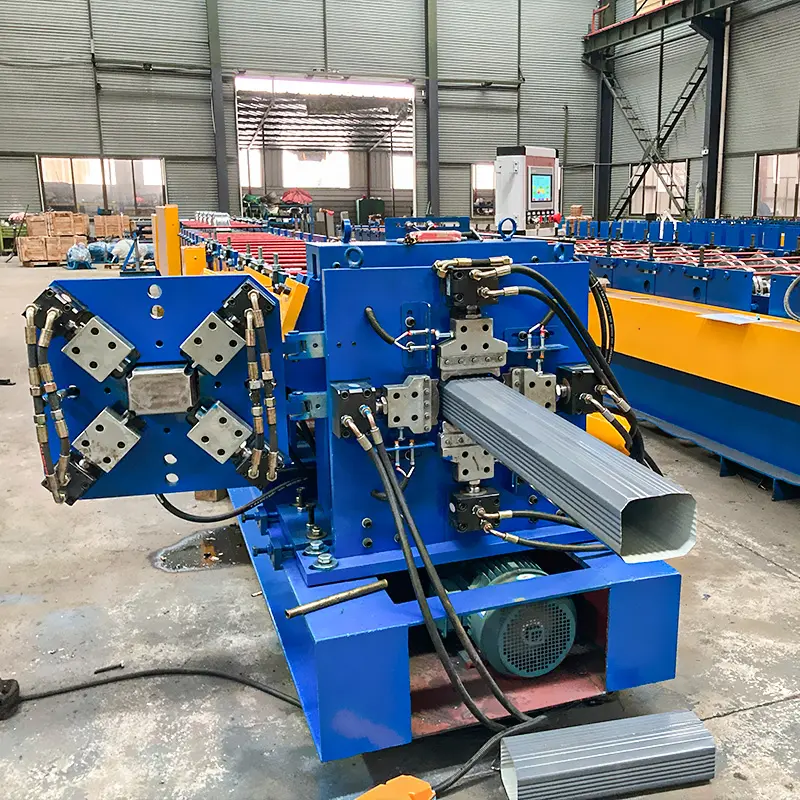
স্টাড রোল ফর্মিং মেশিন ব্যবহারের সুবিধাসমূহ
স্টাড রোল ফর্মিং মেশিন ব্যবহার করলে ঐতিহ্যগত উৎপাদন পদ্ধতির তুলনায় বেশ কয়েকটি সুবিধা পাওয়া যায়। এখানে কয়েকটি মূল সুবিধা উল্লেখ করা হলো:
- উচ্চ দক্ষতা: স্টাড রোল ফর্মিং মেশিনগুলি উচ্চ গতিতে কাজ করে, যা দ্রুত উৎপাদন এবং ম্যানুয়াল বা আধা-স্বয়ংক্রিয় পদ্ধতির তুলনায় উৎপাদন বৃদ্ধি করে।
- নির্ভুলতা এবং সামঞ্জস্যতা: এই মেশিনগুলি প্রত্যেক উৎপাদিত স্টাডের জন্য সুনির্দিষ্ট মাপ এবং অভিন্ন গুণমান নিশ্চিত করে, যা সমাবেশ এবং কাঠামোগত অখণ্ডতা উন্নয়নে সহায়ক।
- খরচ-কার্যকারিতা: স্টাড রোল ফর্মিং মেশিনগুলি উৎপাদন প্রক্রিয়া স্বয়ংক্রিয় করে শ্রম খরচ কমায় এবং উপাদানের অপচয় न्यूনতম করে, যা সামগ্রিক খরচ সাশ্রয় ঘটায়।
- বহুমুখিতা: স্টাড রোল ফর্মিং মেশিনগুলি বিভিন্ন ধরনের স্টাড প্রোফাইল উৎপাদন করতে সক্ষম, যা নির্দিষ্ট প্রকল্পের প্রয়োজনীয়তা পূরণে নমনীয়তা প্রদান করে।
স্টাড রোল ফর্মিং মেশিনের মূল বৈশিষ্ট্যসমূহ
একটি সাধারণ স্টাড রোল ফর্মিং মেশিন রোল ফর্মিং প্রক্রিয়া অপ্টিমাইজ করতে এবং দক্ষ উৎপাদন নিশ্চিত করতে বেশ কয়েকটি মূল বৈশিষ্ট্য অন্তর্ভুক্ত করে। এই বৈশিষ্ট্যগুলির মধ্যে রয়েছে:
- আনকোয়লার: এই উপাদানটি ধাতুর কয়েল ধরে রাখে এবং মেশিনে অবিচ্ছিন্ন ফর্মিংয়ের জন্য এটি সরবরাহ করে।
- রোল ফর্মিং স্টেশন: মেশিনটি ধাতুকে ধাপে ধাপে বাঁকানো এবং আকার দেওয়ার জন্য একাধিক রোল ফর্মিং স্টেশন নিয়ে গঠিত।
- কাটিং প্রকরণ: কাঙ্ক্ষিত স্টাডের দৈর্ঘ্য গঠনের পর, মেশিনটি অবিচ্ছিন্ন কয়েল থেকে এটি পৃথক করার জন্য কাটিং প্রকরণ প্রয়োগ করে।
- নিয়ন্ত্রণ ব্যবস্থা: আধুনিক স্টাড রোল ফর্মিং মেশিনগুলি গতি, দৈর্ঘ্য এবং কাটিং নির্ভুলতার মতো বিভিন্ন প্যারামিটার পর্যবেক্ষণ এবং সমন্বয় করার জন্য উন্নত নিয়ন্ত্রণ ব্যবস্থা অন্তর্ভুক্ত করে।
- নিরাপত্তা বৈশিষ্ট্যসমূহ: অপারেটরের নিরাপত্তা নিশ্চিত করার জন্য, এই মেশিনগুলিতে প্রায়শই নিরাপত্তা গার্ড, জরুরি স্টপ বোতাম এবং ইন্টারলক সিস্টেম থাকে।
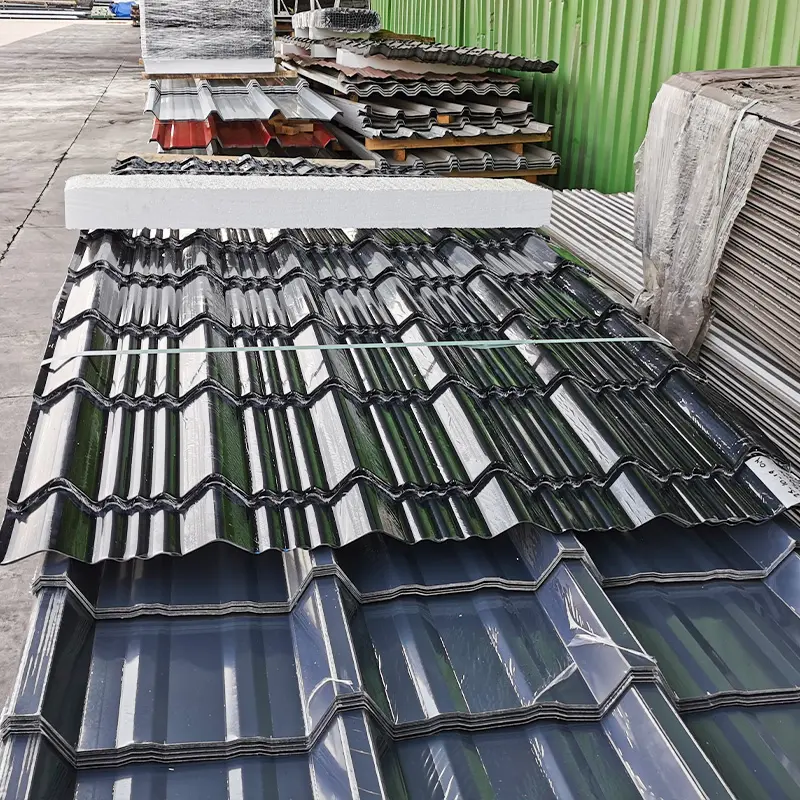
স্টাড রোল ফর্মিং মেশিনের প্রকারভেদ
স্টাড রোল ফর্মিং মেশিনগুলি বিভিন্ন প্রকারের হয়, প্রত্যেকটি নির্দিষ্ট উৎপাদন চাহিদা পূরণের জন্য ডিজাইন করা। সাধারণ প্রকারগুলির মধ্যে রয়েছে:
একতরফা স্টাড রোল ফর্মিং মেশিন
একতরফা স্টাড রোল ফর্মিং মেশিন একপাশে একক প্রোফাইলযুক্ত স্টাড বা ট্র্যাক উৎপাদন করে। এটি এমন অ্যাপ্লিকেশনের জন্য উপযুক্ত যেখানে স্টাডের একপাশ দৃশ্যমান হবে বা নির্দিষ্ট বৈশিষ্ট্য প্রয়োজন।
দ্বিতরফা স্টাড রোল ফর্মিং মেশিন
দ্বিতরফা স্টাড রোল ফর্মিং মেশিন উভয় পাশে প্রোফাইলযুক্ত স্টাড বা ট্র্যাক গঠন করে। এই প্রকারটি এমন অ্যাপ্লিকেশনের জন্য আদর্শ যেখানে স্টাডের উভয় পাশ দৃশ্যমান হবে বা নির্দিষ্ট কার্যকারিতা প্রয়োজন।
ট্র্যাক রোল ফর্মিং মেশিন
ট্র্যাক রোল ফর্মিং মেশিন সিলিং সিস্টেম বা অন্যান্য অ্যাপ্লিকেশনে ব্যবহৃত লিনিয়ার সাপোর্ট স্ট্রাকচারের জন্য ট্র্যাক উৎপাদনে বিশেষজ্ঞ। এই ট্র্যাকগুলির অনন্য আকৃতি সাসপেন্ডেড সিলিং, লাইটিং সিস্টেম বা পার্টিশন ওয়ালের জন্য উপযোগী।
স্টাড রোল ফর্মিং মেশিনের অ্যাপ্লিকেশন
নির্মাণ এবং উৎপাদন শিল্পে স্টাড রোল ফর্মিং মেশিনের ব্যাপক অ্যাপ্লিকেশন রয়েছে। কিছু সাধারণ ব্যবহারের মধ্যে রয়েছে:
- আবাসিক এবং বাণিজ্যিক ভবনের ফ্রেমিং সিস্টেম
- পার্টিশন ওয়াল এবং সাসপেন্ডেড সিলিং
- ছাদ এবং ক্ল্যাডিং সিস্টেম
- ড্রাইওয়াল এবং জিপসাম বোর্ড অ্যাসেম্বলি
- প্রি-ফ্যাব্রিকেটেড স্ট্রাকচার এবং মডুলার ভবন
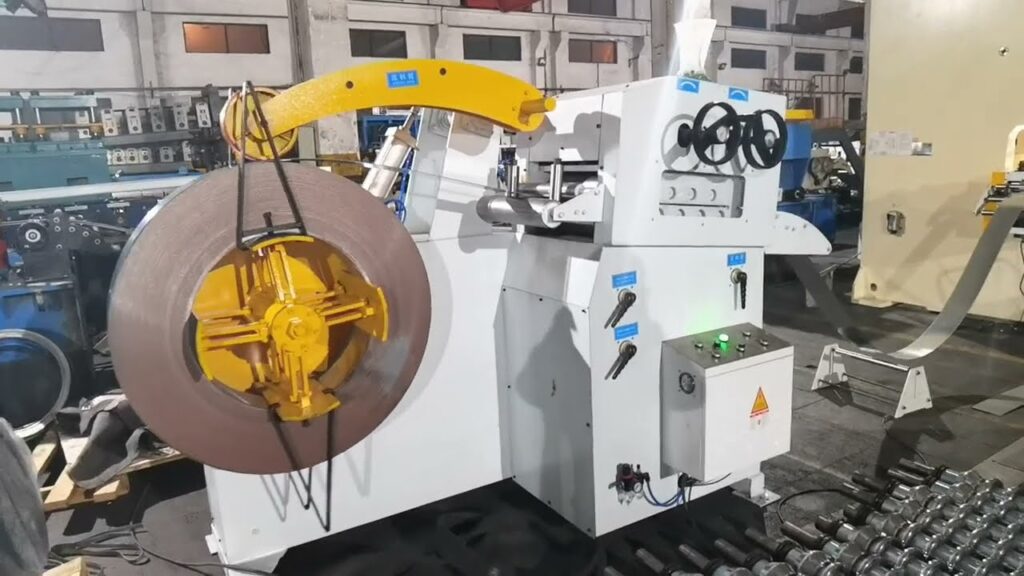
স্টাড রোল ফর্মিং মেশিন নির্বাচনের সময় বিবেচনা করার কারণসমূহ
সঠিক স্টাড রোল ফর্মিং মেশিন নির্বাচন উৎপাদন চাহিদা কার্যকরভাবে পূরণের জন্য অত্যন্ত গুরুত্বপূর্ণ। ক্রয়ের পূর্বে নিম্নলিখিত কারণগুলি বিবেচনা করুন:
উপাদান সামঞ্জস্যতা
মেশিনটি আপনার ব্যবহারের উদ্দেশ্যে নির্দিষ্ট ধাতু উপাদানের সাথে সামঞ্জস্যপূর্ণ কিনা তা নিশ্চিত করুন, যেমন স্টিল, অ্যালুমিনিয়াম বা গ্যালভানাইজড স্টিল।
উৎপাদন গতি
মেশিনের উৎপাদন গতি মূল্যায়ন করুন যাতে এটি আপনার কাঙ্ক্ষিত আউটপুট এবং প্রকল্পের সময়সীমার সাথে সামঞ্জস্যপূর্ণ হয়।
কাস্টমাইজেশন অপশন
মেশিনটি স্টাড প্রোফাইলের সহজ সমন্বয় এবং কাস্টমাইজেশন অনুমতি দেয় কিনা তা পরীক্ষা করুন, কারণ বিভিন্ন প্রকল্পে অনন্য মাত্রা বা বৈশিষ্ট্য প্রয়োজন হতে পারে।
মেশিনের স্থায়িত্ব
স্থায়িত্ব এবং দীর্ঘমেয়াদী কর্মক্ষমতা নিশ্চিত করার জন্য উচ্চমানের উপাদান এবং উপাদান দিয়ে তৈরি মেশিনে বিনিয়োগ করুন।
রক্ষণাবেক্ষণ এবং সহায়তা
মেশিনটি সঠিকভাবে চলমান রাখার জন্য প্রযুক্তিগত সহায়তা, যথাযথ অংশ এবং রক্ষণাবেক্ষণ পরিষেবার উপলব্ধতা বিবেচনা করুন।
স্টাড রোল ফর্মিং মেশিন পরিচালনা করার পদ্ধতি
স্টাড রোল ফর্মিং মেশিন পরিচালনা নিরাপদ এবং দক্ষ উৎপাদন নিশ্চিত করার জন্য কয়েকটি ধাপ জড়িত:
- সেটআপ: কাঙ্ক্ষিত স্টাড প্রোফাইল অনুসারে উপযুক্ত ধাতুর কয়েল লোড করে এবং রোল ফর্মিং স্টেশনগুলি সমন্বয় করে মেশিন প্রস্তুত করুন।
- ফিডিং: মেশিন চালু করুন এবং ধাতুর কয়েল ফর্মিং স্টেশনে সঠিক টেনশন বজায় রেখে মসৃণভাবে ফিড হয় তা নিশ্চিত করুন।
- ফর্মিং: ধাতুর কয়েল প্রত্যেক রোল ফর্মিং স্টেশনের মধ্য দিয়ে যায়, যেখানে এটি পূর্বনির্ধারিত প্রোফাইল অনুসারে ধাপে ধাপে বাঁকানো এবং আকার দেওয়া হয়।
- কাট-অফ: কাঙ্ক্ষিত স্টাড দৈর্ঘ্য অর্জিত হলে, কাট-অফ প্রক্রিয়া সক্রিয় করে অবিরত কয়েল থেকে স্টাড আলাদা করুন।
- সংগ্রহ এবং স্ট্যাকিং: সমাপ্ত স্টাড বা ট্র্যাক সংগ্রহ করুন এবং আরও প্রক্রিয়াকরণ বা পরিবহনের জন্য নিরাপদে স্ট্যাক করুন।
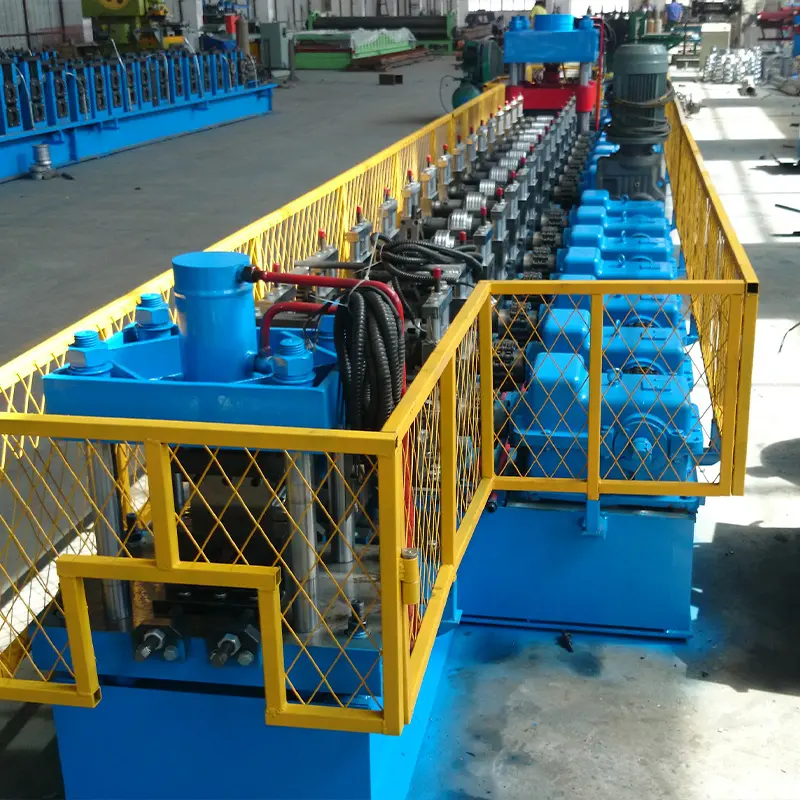
স্টাড রোল ফর্মিং মেশিন ব্যবহারের নিরাপত্তা ব্যবস্থা
স্টাড রোল ফর্মিং মেশিন পরিচালনার সময় নিরাপত্তাকে অগ্রাধিকার দিন। এই নিরাপত্তা ব্যবস্থাগুলি অনুসরণ করুন:
- নিরাপত্তা চশমা, গ্লাভস এবং কানের সুরক্ষা সহ উপযুক্ত ব্যক্তিগত সুরক্ষা সরঞ্জাম (পিপিই) পরুন।
- মেশিনের নিরাপত্তা বৈশিষ্ট্য এবং জরুরি স্টপ বোতামের সাথে নিজেকে পরিচিত করুন।
- কোনো ক্ষতিগ্রস্ত বা জীর্ণ অংশের জন্য মেশিন নিয়মিত পরিদর্শন করুন এবং তাৎক্ষণিক প্রতিস্থাপন করুন।
- মেশিন অপারেটরদের জন্য সঠিক প্রশিক্ষণ এবং তত্ত্বাবধান নিশ্চিত করুন যাতে দুর্ঘটনার ঝুঁকি কমানো যায়।
স্টাড রোল ফর্মিং মেশিনের সাধারণ সমস্যাগুলির সমাধান
স্টাড রোল ফর্মিং মেশিনগুলি সঞ্চালনের সময় মাঝে মাঝে সমস্যার সম্মুখীন হতে পারে। এখানে কিছু সাধারণ সমস্যা এবং তাদের সম্ভাব্য সমাধান দেওয়া হলো:
- ম্যাটেরিয়াল জ্যামিং: যেকোনো ধুলোবালি বা ধাতুর টুকরো পরিষ্কার করুন যা উপাদানকে মেশিনে আটকে যেতে পারে।
- অসামঞ্জস্যপূর্ণ মাপ: রোল ফর্মিং স্টেশনগুলি পরীক্ষা করে সঠিক সারিবদ্ধতা এবং বাঁকানোর কোণ নিশ্চিত করুন।
- কাটিং ত্রুটি: কাটিং প্রক্রিয়ার সেটিংস যাচাই করুন এবং ব্লেডের অবস্থান সামঞ্জস্য করুন বা কোনো খসখেসে ব্লেড প্রতিস্থাপন করুন।
- অনিয়মিত গতি: মোটর এবং ড্রাইভ সিস্টেম পরীক্ষা করুন যাতে কোনো ত্রুটি বা অসামঞ্জস্যতা না থাকে যা মেশিনের গতিকে প্রভাবিত করতে পারে।
যদি সমস্যা সমাধানের জন্য ট্রাবলশুটিং ধাপগুলি কার্যকর না হয়, তাহলে মেশিনের ম্যানুয়াল দেখুন বা প্রস্তুতকারকের সাথে যোগাযোগ করুন আরও সহায়তার জন্য।
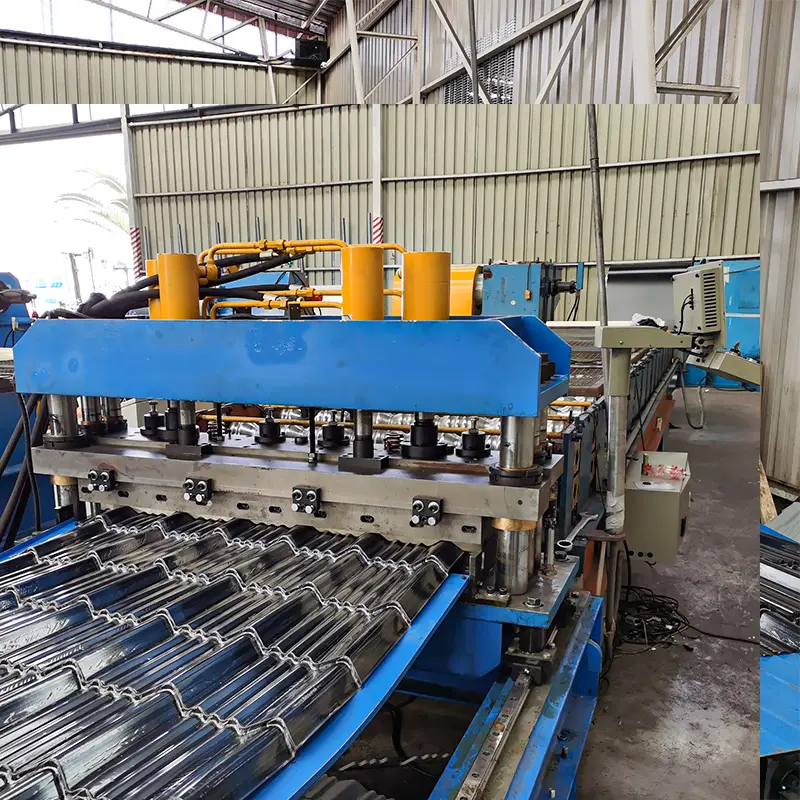
স্টাড রোল ফর্মিং মেশিন প্রযুক্তির ভবিষ্যৎ প্রবণতা
স্টাড রোল ফর্মিং মেশিনের ক্ষেত্রটি ক্রমাগত বিকশিত হচ্ছে, যেখানে প্রযুক্তির অগ্রগতি এই শিল্পের ভবিষ্যৎ গঠন করছে। এখানে কিছু উদীয়মান প্রবণতা উল্লেখ করা হলো:
- অটোমেশন এবং রোবোটিক্স: স্টাড রোল ফর্মিং মেশিনে অটোমেশন এবং রোবোটিক্সের একীকরণ বৃদ্ধি উৎপাদন দক্ষতা বাড়াবে এবং ম্যানুয়াল হস্তক্ষেপের প্রয়োজনীয়তা হ্রাস করবে।
- স্মার্ট ম্যানুফ্যাকচারিং: সেন্সর এবং ডেটা অ্যানালিটিক্সের একীকরণ মেশিনের কর্মক্ষমতার রিয়েল-টাইম মনিটরিং, প্রেডিক্টিভ মেইনটেন্যান্স এবং উৎপাদন প্রক্রিয়ার অপ্টিমাইজেশন সম্ভব করবে।
- শক্তি দক্ষতা: নির্মাতারা উন্নত মোটর এবং ড্রাইভ সিস্টেম প্রয়োগ করে শক্তি-দক্ষ স্টাড রোল ফর্মিং মেশিন তৈরিতে মনোনিবেশ করছেন, যা সামগ্রিক শক্তি খরচ হ্রাস করবে।
- উন্নত কাস্টমাইজেশন: ভবিষ্যতের মেশিনগুলি নির্দিষ্ট প্রকল্পের প্রয়োজনীয়তা পূরণের জন্য কাস্টমাইজড স্টাড প্রোফাইল উৎপাদনে আরও বেশি নমনীয়তা প্রদান করবে।
- উন্নত নিরাপত্তা বৈশিষ্ট্য: চলমান গবেষণা ও উন্নয়ন অপারেটরের নিরাপত্তার সর্বোচ্চ স্তর নিশ্চিত করার জন্য উন্নত নিরাপত্তা বৈশিষ্ট্য বাস্তবায়নের দিকে নিয়ে যাবে।
উপসংহার
স্টাড রোল ফর্মিং মেশিনগুলি ধাতব স্টাড এবং ট্র্যাক উৎপাদনে বিপ্লব ঘটিয়েছে, যা উচ্চ দক্ষতা, নির্ভুলতা এবং বহুমুখিতা প্রদান করে। উৎপাদন প্রক্রিয়া স্বয়ংক্রিয় করে এই মেশিনগুলি খরচ-কার্যকর উৎপাদন সম্ভব করে একই সঙ্গে ধারাবাহিক গুণমান বজায় রাখে। স্টাড রোল ফর্মিং মেশিন নির্বাচন করার সময় উপাদানের সামঞ্জস্যতা, উৎপাদন গতি, কাস্টমাইজেশন অপশন, মেশিনের স্থায়িত্ব এবং রক্ষণাবেক্ষণ সহায়তার মতো উপাদানগুলি বিবেচনা করা উচিত। মেশিন নিরাপদে চালানো এবং সাধারণ সমস্যাগুলির জন্য ট্রাবলশুটিং কৌশল অনুসরণ করা মসৃণ উৎপাদন নিশ্চিত করে। শিল্প যত অগ্রসর হচ্ছে, স্টাড রোল ফর্মিং মেশিন প্রযুক্তিতে অটোমেশন, স্মার্ট ম্যানুফ্যাকচারিং এবং উন্নত কাস্টমাইজেশনের সঙ্গে ভবিষ্যত উত্তেজনাপূর্ণ সম্ভাবনা নিয়ে এসেছে।
প্রায়শই জিজ্ঞাসিত প্রশ্ন (এফএকিউ)
প্রশ্ন ১. স্টাড রোল ফর্মিং মেশিন কি শুধুমাত্র নির্মাণ শিল্পে ব্যবহৃত হয়?
না, স্টাড রোল ফর্মিং মেশিনগুলি অটোমোটিভ, এয়ারোস্পেস এবং যন্ত্রপাতি নির্মাণের মতো বিভিন্ন উৎপাদন শিল্পেও ব্যবহৃত হয় যেখানে ধাতব স্টাড বা ট্র্যাক প্রয়োজন।
প্রশ্ন ২. স্টাড রোল ফর্মিং মেশিন কি বিভিন্ন আকারের স্টাড উৎপাদন করতে পারে?
হ্যাঁ, স্টাড রোল ফর্মিং মেশিনগুলি বিভিন্ন দৈর্ঘ্য এবং প্রস্থের স্টাড উৎপাদনের জন্য সামঞ্জস্য করা যায়, যা প্রকল্পের প্রয়োজনীয়তা অনুসারে কাস্টমাইজেশনের সুযোগ প্রদান করে।
প্রশ্ন ৩। স্টাড রোল ফর্মিং মেশিনগুলি পরিচালনা করা কি কঠিন?
স্টাড রোল ফর্মিং মেশিন পরিচালনার জন্য যথাযথ প্রশিক্ষণ এবং জ্ঞান প্রয়োজন হলেও, আধুনিক মেশিনগুলিতে সাধারণত ব্যবহারকারী-বান্ধব ইন্টারফেস এবং নিয়ন্ত্রণ ব্যবস্থা থাকে, যা তাদের পরিচালনাকে তুলনামূলকভাবে সহজ করে তোলে।
প্রশ্ন ৪। নতুন প্রোফাইলের জন্য স্টাড রোল ফর্মিং মেশিন সেটআপ করতে কত সময় লাগে?
নতুন প্রোফাইলের সেটআপ সময় প্রোফাইলের জটিলতা এবং অপারেটরের অভিজ্ঞতার উপর নির্ভর করে পরিবর্তিত হতে পারে। সাধারণত, এটি কয়েক মিনিট থেকে এক ঘণ্টা পর্যন্ত সময় নিতে পারে।
প্রশ্ন ৫। স্টাড রোল ফর্মিং মেশিনগুলি কি বিভিন্ন ধরনের ধাতু উপাদানের সাথে কাজ করতে পারে?
হ্যাঁ, স্টাড রোল ফর্মিং মেশিনগুলি ইস্পাত, অ্যালুমিনিয়াম এবং গ্যালভানাইজড ইস্পাত সহ বিভিন্ন ধাতু উপাদানের সাথে কাজ করতে পারে। তবে, আপনার ব্যবহার করতে চাওয়া নির্দিষ্ট উপাদানের সাথে মেশিনের সামঞ্জস্য নিশ্চিত করা অত্যন্ত জরুরি।
